Bard Magic3® GO Catheter
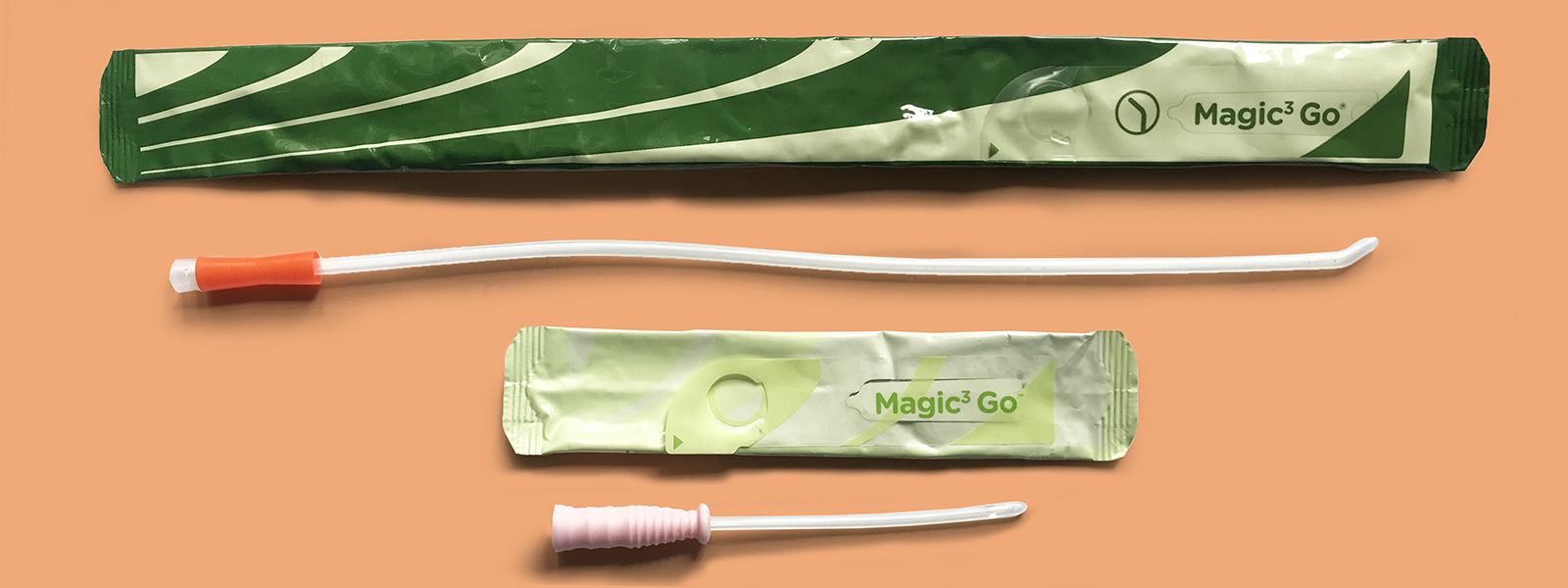
Product Overview
Available Lengths: 16 inches (Male); 10 inches (Pediatric); 6 inches (Female)
Available French Sizes: Fr 6 (Pediatric only), 8 (Pediatric Only), 10, 12 (Male & Female only), 14 (Male & Female only), 16 (Male & Female only), 18 (Male & Female only), 20 (Male & Female only)
Available Tips: Coudé and Standard
Pros
These were both very lubricious catheters, right out of the packaging.
A 100% silicone catheter is not something that we see very often in a field dominated by PVC.
Our Verdict
A 100% silicone catheter certainly grabs our attention. Your mileage with this catheter may vary, if product complaints are any indication.
Cons
A lot of complaints were filed about the catheter with the FDA in 2019.
Material
The Bard Magic3® GO catheter is a ready-to-use all-silicone catheter with a hydrophilic coating with an additional CLEANGLIDE™ hydrogel coating on top of it. This means that unlike the Magic3® hydrophilic catheter, there aren’t any sachets to burst and the catheter emerges from the package ready to be used.
Unlike many other catheter designs, the funnel is not made out of a stiffer plastic, nor is it glued onto the catheter for the male version of the catheter – instead the catheter itself flares out in a unibody design. The female version of this catheter does feature a significant overmolded funnel, perhaps because of the differences in technique when women are catheterizing versus men.
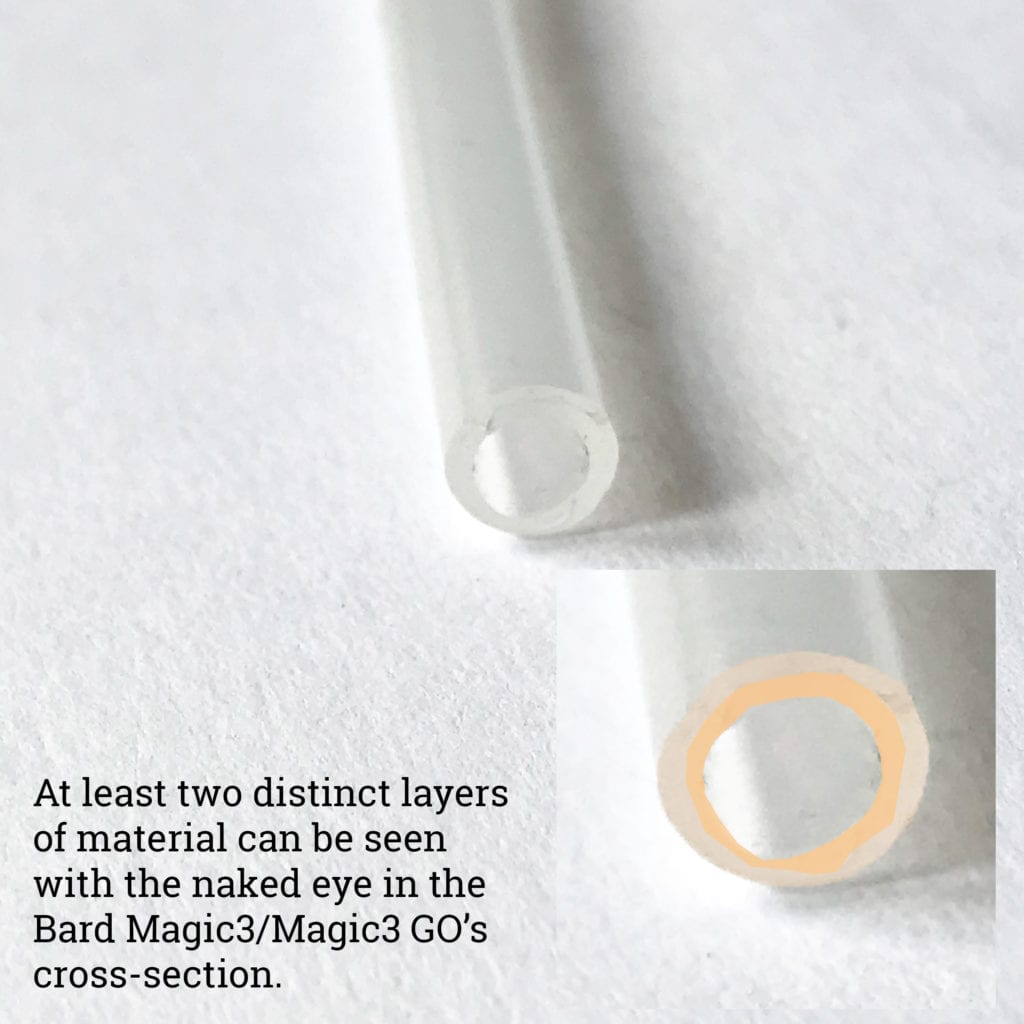 Bard’s marketing materials emphasize the 3-layer construction of the catheter – the outer layer is soft to maximize comfort, the middle layer is firm to maximize handling ability, and the inner layer is pliable for easy navigation. As in the Magic3®, it’s difficult to assess how much this construction has on the actual user experience, but you can see evidence of the three separate layers in the funnel end of the catheter – it’s harder to pick out the different layers in a cross-section.
Bard’s marketing materials emphasize the 3-layer construction of the catheter – the outer layer is soft to maximize comfort, the middle layer is firm to maximize handling ability, and the inner layer is pliable for easy navigation. As in the Magic3®, it’s difficult to assess how much this construction has on the actual user experience, but you can see evidence of the three separate layers in the funnel end of the catheter – it’s harder to pick out the different layers in a cross-section.
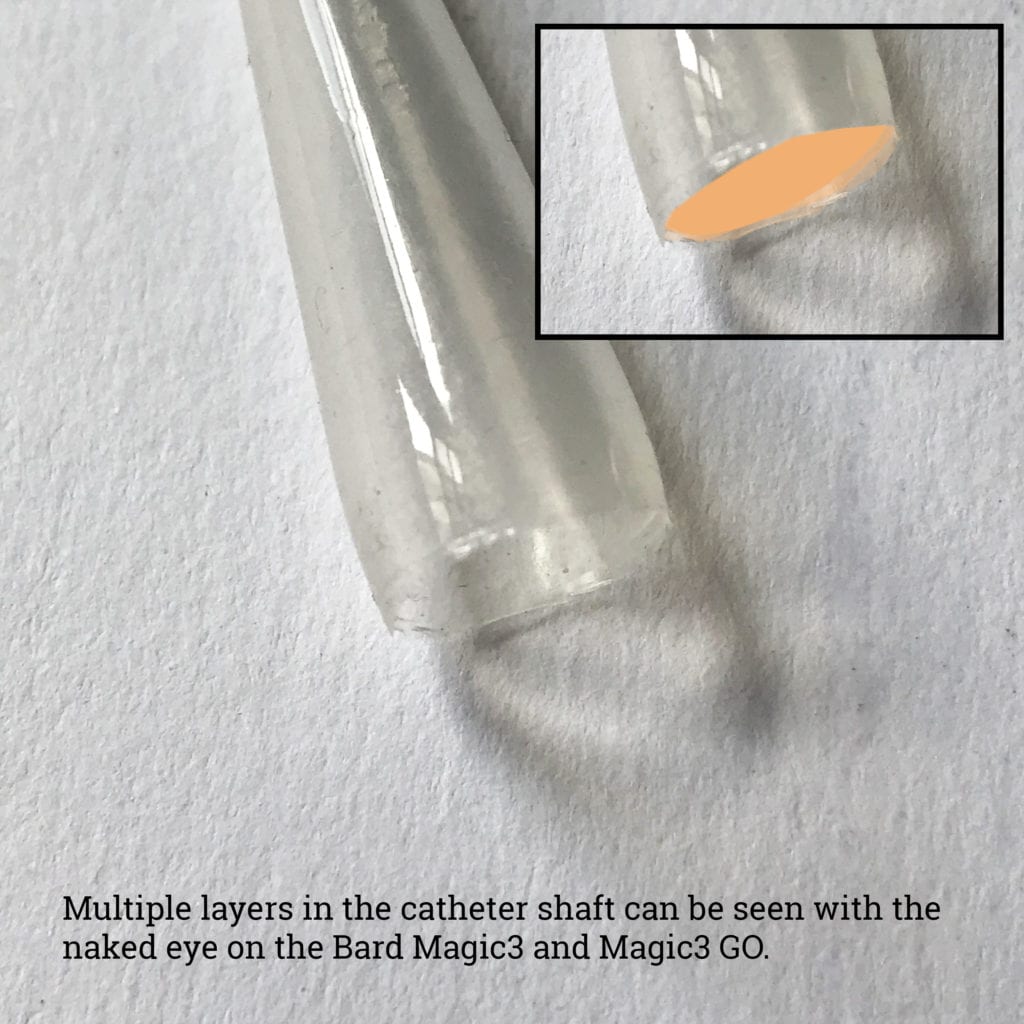
As for the catheter itself, medical grade silicone is known to be extremely biocompatible, which is why it’s used in a number of different medical device applications. Silicone doesn’t break down the same way that plastics do, so they don’t leach into the environment or end up as microparticles in the ocean, though the extent to which this is true may be exaggerated. It does end up in landfills, as there isn’t an easy way to reprocess or recycle it, and it isn’t biodegradable.
The hydrogel coating is unique to the Magic3 GO®. Generally speaking, hydrogels are so classified due to their ability hold a lot of water in their 3-D structures. In addition to their use in ready-to-use hydrophilic catheters, hydrogels are also used in applications like contact lenses, and their biocompatibility has been well established and is thought to stem from the similarity of hydrogels’ physical properties to natural tissue.
Flexibility

The male catheter droops down 12 inches while extending 6.75 inches, making it one of the more flexible hydrophilic catheters that we’ve tested (we’re not including catheters with an integrated full-length insertion sleeve like the Coloplast Speedicath Flex Coude Pro or the Hollister Vapro Coudé in that statement). Luckily it comes with a sleeve to make it a bit easier to insert.
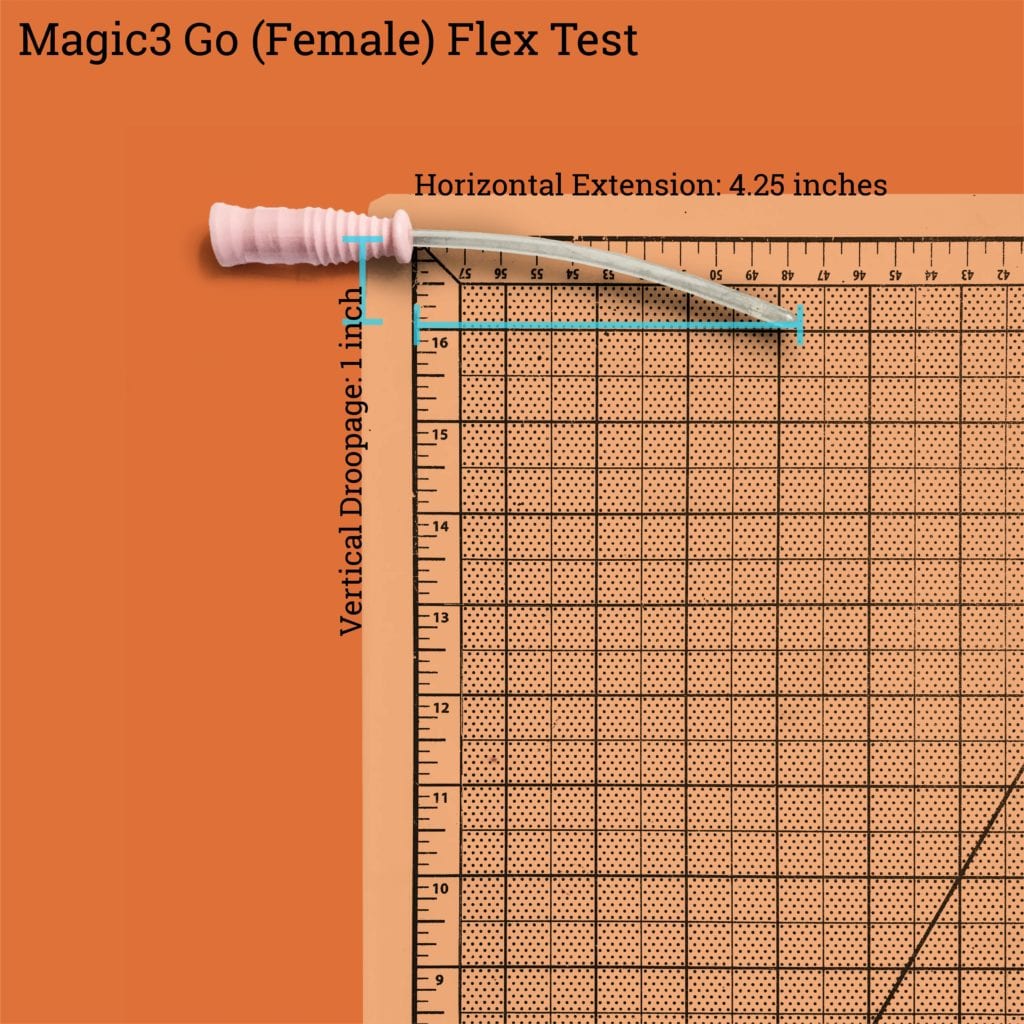
The female catheter is similarly flexible, especially considering that many female catheters are quite stiff indeed. It droops down a full inch while extending 4.25 inches horizontally. This doesn’t come with a sleeve, and female users should be careful about accidentally inserting it in the vaginal canal.
Packaging
The Magic3 GO® is packaged in a metallic foil-based packaging. The difference in packaging from the Magic3® is likely due to the fact that the water content in the package can’t be allowed to evaporate, otherwise the hydrogel coating on the Magic3 GO® will dry out.
The packaging can be opened through easy-open tabs that make the product accessible to individuals with limited dexterity. Pulling on the tab opens a condom-shaped window in the packaging, through which it is possible to grasp the catheter using the included gripping sleeve, which is made out of polyethylene. Because the catheter is ready-to-go, there’s minimal mess inside the packaging, and Bard has therefore not included a mounting sticker on the package.
Lubrication
We’re pretty impressed by the combination of the PVP hydrophilic coating and the CLEANGLIDE™ technology on this catheter. Hydrophilic coatings are typically made out of a chemical called polyvinylpyrrolidone, also known as PVP. Generally considered to be safe, there have been very rare documented cases of allergic reactions to this material, particularly when it comes into contact with mucous membranes (as is the case with catheterization).
Even when the packages were left open overnight, the catheters within remained lubricious and wet to the touch. Because the lubrication is the same as the Magic3®, we noticed some gel-like build up when we inserted the catheter into our prosthetic, so some clean-up after use will be necessary.
Many users did file complaints with the FDA that the catheters arrived insufficiently lubricated, so there is some chance that defective units will arrive at your door, which renders the observations of this part of the review moot. Your experience may vary!
Insertion
Instructions for how to use the male version of the catheter can be found here; instructions for the female catheter can be found here.
The Magic3 GO® comes with an insertion sleeve by default, and the packaging seems to be set up so that the sleeve is immediately accessible when you open the package. This makes inserting the catheter without touching it a bit easier than the Magic3®, which is great.
It’s important to note that even with the sleeve, you still have a risk of contaminating the catheter when inserting it – the urethral opening is known to house pathogens that can cause UTIs – if you’re worried about getting one, make sure you wipe yourself down with sterile wipes before trying to insert the catheter.
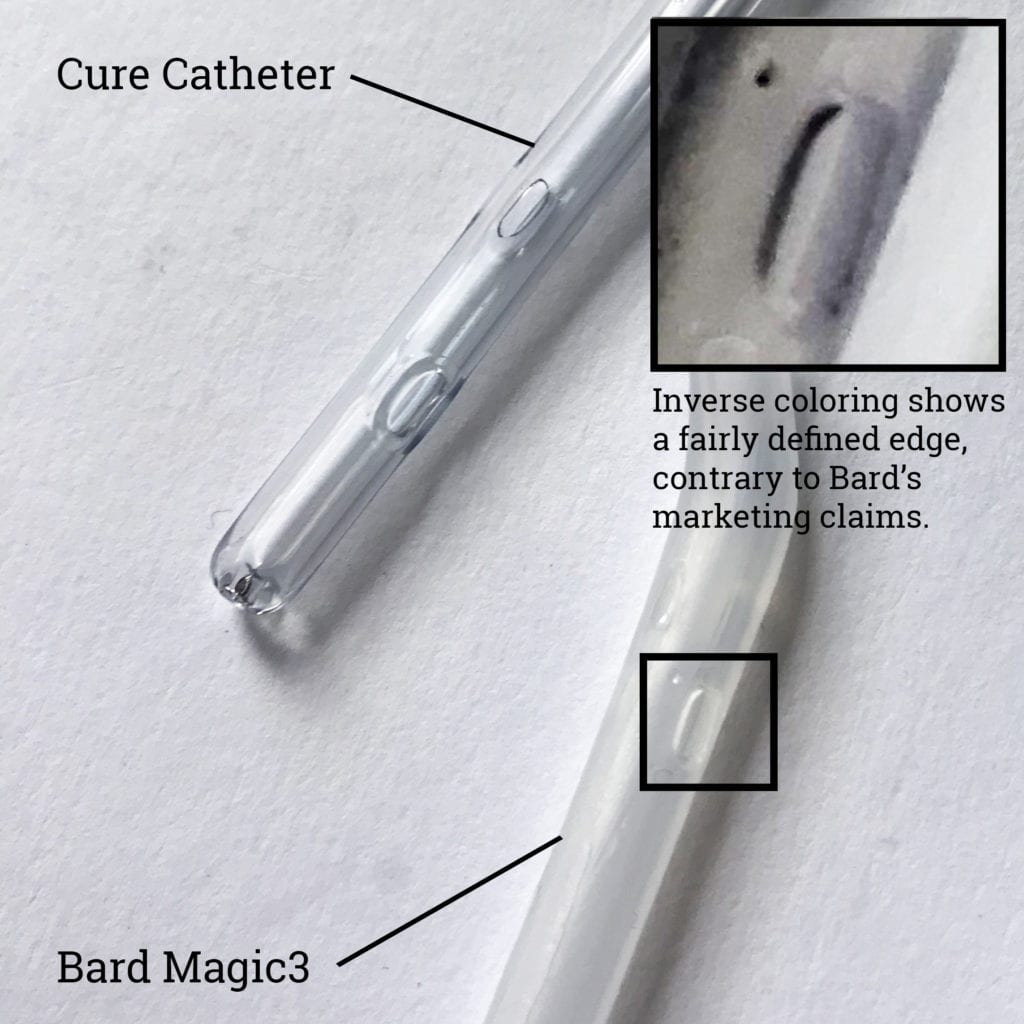
Like the Magic3®, the catheter comes with 4 eyelets, which is more than the standard 2. This might translate to faster bladder drainage, but we’d suspect that the main limitation there is French size and how much volume can move down the catheter, as opposed to how may eyelets there are. The eyelets are called “comfort-sized” in marketing materials, but compared to a Cure Catheter®, these eyelets don’t seem particularly comfortable – they seem like they were punched through, not polished. They don’t seem to be consistently punched either – our samples consistently had different sized eyelets and some eyelets that weren’t punched through all the way.
Adverse Events
There were 302 complaints filed with the FDA about the Magic3 GO® catheter in 2019, which is slightly less than the Magic3®’s 325 complaints.
The issues that popped up with the highest frequency here were that the catheters were insufficiently lubricated or were dry when the package was opened, the catheters caused UTIs, the catheters caused bleeding, they arrived deformed, or they were missing eyelets. 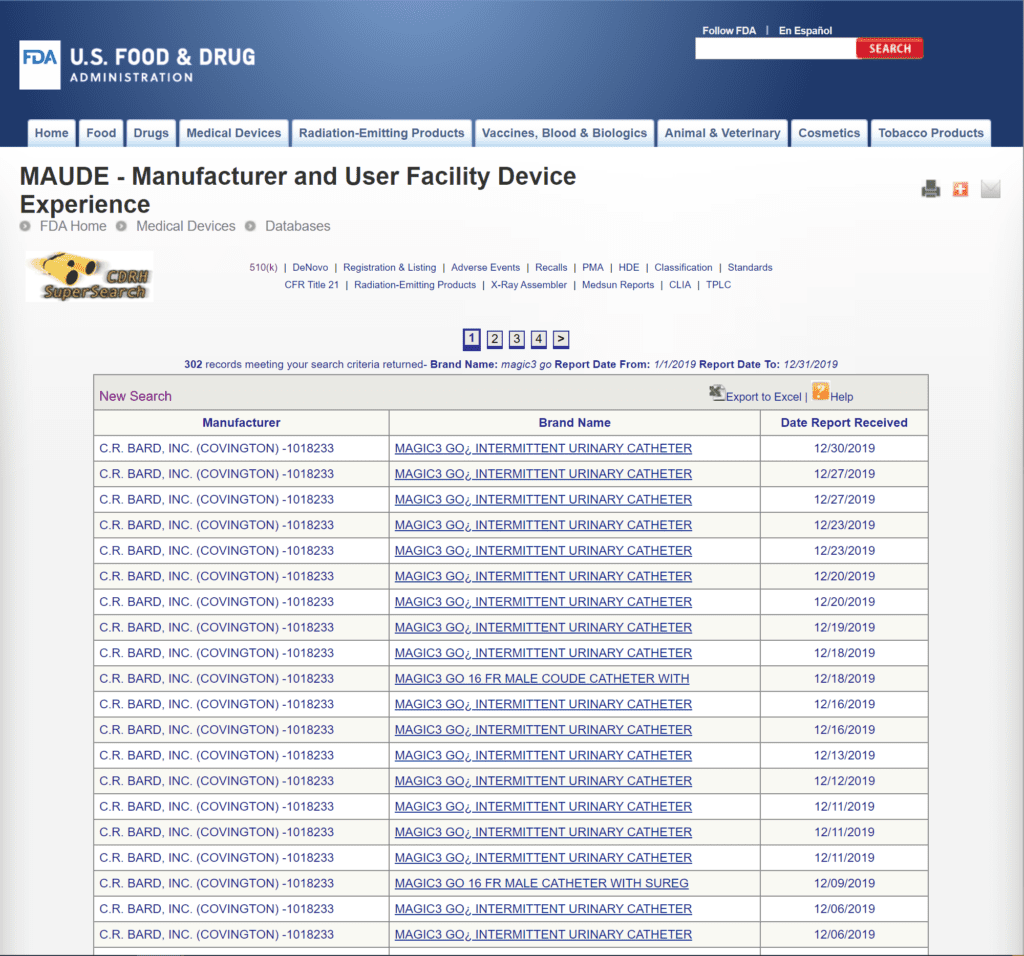
The review of FDA Medical Device Reports from 2019 provides a limited snapshot of recent product performance in the marketplace.